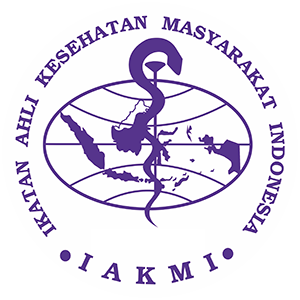EDUKASI PROGRAM PENCEGAHAN ANEMIA MENGGUNAKAN PEDOMAN PEMBERIAN TABLET TAMBAH DARAH
DOI:
https://doi.org/10.30787/gemassika.v9i1.1365Keywords:
Anemia, Blood suplement tablets, Education, StuntingAbstract
Anemia in women of childbearing age, including teenagers, is still become a world health problem. The prevalence of anemia is >40% in fertile women. Women of childbearing age have low compliance with taking iron tablets, which is influenced by several factors, one of which is knowledge. Prolonged anemia can lead to stunting in children if the woman becomes pregnant. The aim of the service is to increase the knowledge of students as teenagers regarding the consumption of blood supplement tablets.
The solution to the problem is to increase the knowledge of students as teenagers about the importance of consuming blood supplement tablets to prevent anemia, which is the basis for preventing stunting. The expected output is an increase in students' understanding of the role of iron in preventing stunting. Another output is the publication of a community service journal.
References
Ayu Awalamaroh, Sri Rahayu, L. and Indah, Y. (2018) ‘Kepatuhan Mengonsumsi Tablet Fe Berhubungan Dengan Status Anemia Pada Ibu Hamil Compliance of iron tablets consumption related to anemia status in pregnant women. ’, ARGIPA, 3(2), pp. 80–90.
Dinas Kesehatan Kota Semarang (2019) ‘Rekapan Laporan Kesehatan Remaja Januari- Desember 2019.’
Donoso, M.B. et al. (2019) ‘Normality Ranges of Menstrual Fluid Volume During Reproductive Life Using Direct Quantification of Menses with Vaginal Cups’, Gynecologic and Obstetric Investigation, 84(4), pp. 390–395. Available at: https://doi.org/10.1159/000496608.
Dubik SD et al. (2019) ‘Compliance with Weekly Iron and Folic Acid Supplementation and Its Associated Factors among Adolescent Girls in Tamale Metropolis of Ghana. J Nutr Metab.’
Klaus, B. et al. (2003) ‘Increasing the Cooking Temperature of Meat Does Not Affect Nonheme Iron Absorption from a Phytate-Rich Meal in Women’, The Journal of Nutrition, 133(1), pp. 94–97. Available at: https://doi.org/10.1093/jn/133.1.94.
Kumar, A. et al. (2022) ‘Iron deficiency anaemia: pathophysiology, assessment, practical management’, BMJ Open Gastroenterology, 9(1), p. e000759. Available at: https://doi.org/10.1136/bmjgast-2021-000759.
Li, N. et al. (2020) ‘The Efficacy and Safety of Vitamin C for Iron Supplementation in Adult Patients With Iron Deficiency Anemia’, JAMA Network Open, 3(11), p. e2023644. Available at: https://doi.org/10.1001/jamanetworkopen.2020.23644.
Moustarah F and Daley SF (2023) ‘Dietary Iron. [Updated 2022 Oct 22]. In: StatPearls [Internet]. Treasure Island (FL): StatPearls Publishing; ’, Jan-. Available from: https://www.ncbi.nlm.nih.gov/books/NBK540969/ [Preprint].
Prasetya, K., Wihandani DM and Syradarma IWG (2019) ‘Hubungan antara Anemia dengan Prestasi Belajar pada Siswi Kelas XI di SMAN 1 ABIANSEMAL Badung. ’, E-Jurnal Medika, 8, pp. 46–51.
Sam, AT. and Parasuraman, S. (2015) ‘The Nine Star Pharamcist: An Overview., Journal of Young Pharmacies., pp. 281–284.
WHO. 2019. “The Global Prevalence Of Anemia. Geneva.” World Health Organization.
Zhang, T. et al. (2021) ‘Association Between Hemoglobin and Growth Hormone Peak in Chinese Children and Adolescents with Short Stature: A Cross-Sectional Study’, International Journal of General Medicine, Volume 14, pp. 497–504. Available at: https://doi.org/10.2147/IJGM.S292920.
Downloads
Published
How to Cite
Issue
Section
License
Copyright (c) 2025 GEMASSIKA: Jurnal Pengabdian Kepada Masyarakat

This work is licensed under a Creative Commons Attribution-NonCommercial 4.0 International License.












